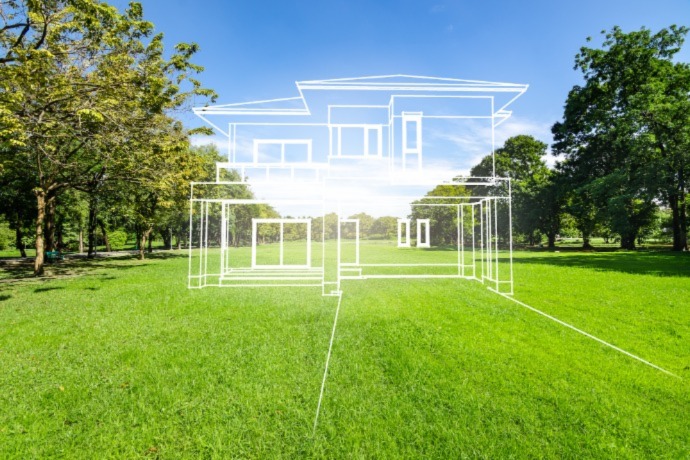April 25, 2023
Are you dreaming of building the perfect home for you and your family? It's an exciting prospect, but it's important to go in with your eyes wide open. Building your dream home is a complex process, requiring lots of planning, research, and reflection.
From understanding the legal and financial aspects of construction to selecting the right design team to setting realistic expectations, there are many considerations that you need to take into account. This blog post will provide you with the information you need to make an informed decision about starting your dream home journey.
1. Ensure You Know Exactly What You Want

Before any ground is broken, it’s critically important for you to understand what you want out of your dream home. Consider this part of the process an exciting form of research and development! The more detailed you are during this phase, the more pleased you will be with the final outcome of your home. You don’t want to look back thinking, “I wish I’d thought of that!”
Utilizing online resources, such as Pinterest boards and home design magazines, can be a great place to start gathering ideas and inspiration. Pay attention to what styles and features in a home you feel most drawn to, while still considering the realistic needs of your family and daily life. Consider aspects of a home you could never live without, and aspects that aren’t truly your priority. Writing this information down can help you get started on a design that truly meets your needs and wants.
While the incredible home design photos, videos, and resources available online are a great place to get started, nothing is a replacement for real life. Get out into the wild with a pen and paper, and take note of what you love! What do you like about the homes of your friends and family? Are there any open houses you can check out? Getting a real-life feel for different design features can help you truly understand what you want out of your home build and renovations.
2. What Can You Afford Comfortably?

After reviewing the details of exactly what you’d like in a home, it’s time to make it real by figuring out what you can afford. No house can be built or renovated without first understanding a realistic budget for the project!
The biggest mistake that new homeowners can make is biting off more than they can chew in terms of their budget. It’s important to research how much various materials, labor, and various fees will cost you. There are usually unexpected additional costs involved in a new build, so that’s something to factor in as well.
Having a thorough, realistic, and detailed budget plan will help to ensure that all necessary expenses are accounted for, and that you are making building choices in like with means. Financing can always be used to fill in any gaps and to provide extra funds for unplanned expenses. However, it’s not the best idea to rely completely on the financing of your dream home. You’ll want to be honest with yourself and your team about what your estimated total budget is.
The estimated budget you create should be made depending on obvious factors such as the location, size, materials, labor costs, and extra features of the home, as mentioned. Don’t forget to research and evaluate your predicted costs for less obvious expenses, though. Here is a list of common categories you may want to consider when planning to build your dream home:
-
Land cost and site preparation
-
Architect and designer fees
-
Permits and inspections
-
Foundation and excavation costs
-
Framing and roofing materials
-
Plumbing and electrical systems
-
Windows and doors
-
Insulation and drywall
-
Flooring and tiling
-
Kitchen and bathroom fixtures
-
HVAC system
-
Painting and finishing
-
Landscaping and exterior features such as decks, patios, and driveways
-
Appliances and lighting fixtures
-
Furniture and decor.
Tax Credits for Environmentally-Friendly Choices

The construction industry is one of the largest contributors to global greenhouse gasses and waste. You can save money on the build of your new home, and help the environment, by researching the eco-tax credits available to you. By making more eco-friendly choices in the materials and systems you install into your home, you may be able to claim a government incentive. Energy efficiency does not only save you money in the long run, but it can also win you a tax write-off while helping combat climate change.
Here are some examples of the tax credits for environmentally friendly choices when building a home:
-
Residential Energy Efficient Property Tax Credit: This tax credit provides a 30% credit for solar, wind, and geothermal energy systems installed in new homes.
-
Energy-Efficient Home Credit: This tax credit provides up to $2,000 for builders who construct energy-efficient homes that meet certain standards, such as the Energy Star program.
-
New Energy Efficient Home Credit: This tax credit provides up to $1,000 for builders who construct homes that meet certain energy efficiency standards, such as the Energy Star program.
-
Nonbusiness Energy Property Tax Credit: This tax credit provides up to $500 for homeowners who install energy-efficient windows, doors, insulation, and other products in their homes.
-
Green Building Tax Deduction: This tax deduction provides up to $1.80 per square foot for builders who construct commercial or residential buildings that meet certain energy efficiency and sustainability standards.
It's important to note that tax credits and deductions are subject to change, and it's essential to consult with a tax or construction professional for guidance on claiming these incentives. Of course, they’re definitely worth considering!
3. How Will You Finance Your Home?

Dream homes usually need the help of good financing. You may seek a land or construction loan to aid in the purchasing of land or the building of the house. Land loans help you to buy a property with no existing structures on it. Construction loans, on the other hand, help to build or rebuild an existing home. Both of these loans usually require a high down payment, and higher interest rates than traditional mortgages. It’s important to work with trusted professionals in securing these loans so that you can fully understand what you’re signing off on!
One important thing to note is that many lenders offer combined land and construction loans that cover both the purchase of the land and the construction of the home. These loans can be convenient for borrowers who want to simplify the borrowing process and have a single loan for their entire building project.
Of course, all of this budgeting and financing might seem overwhelming. Don’t be afraid to enlist the help of an experienced professional to help you evaluate the costs of building your home. They will also be able to help you strike a balance between your existing budget and your financing plan, or how much you will borrow to complete the house.
4. Find Your Dream Team.

Ever wondered how many people are involved in the construction of a house? While the exact number of people varies on the size and complexity of the plan, you’ll need an architect or a designer, a general contractor, potential subcontractors, surveyors, engineers, inspectors, an interior designer, and maybe even a landscaper.
To find a team you can trust, look for home builders in your area and check out their references, licenses, and certifications. Do they have reviews and testimonials from people you can trust? Try your best to get a real understanding of their work quality and customer service.
Review the portfolio of any potential home-building team. This will help you to understand whether their style and quality align with your expectations. You’ll want to seek out homebuilders that are experienced in your specific region, as well as experienced in building the type of house that you want. This will ensure they have the necessary skills and expertise to do the high-quality work you seek!
Before signing with any team, it’s encouraged to get multiple bids. Competing bids from different professionals can help you compare and contrast the cost, quality, and experience of the contenders. After you’ve done enough research, you’ll be able to confidently select your dream team.
5. Create a Timeline.

Lastly, you’ll want to create a realistic timeline for the completion of your project alongside your dream team of designers and builders. Don’t let your home build project sit for years unfinished. Of course, there may be unexpected delays. However, having deadlines for various parts of the process can keep you and your team on track.
In a Nutshell
Building your dream home is an exciting and sometimes daunting task that requires plenty of research and planning. As long as you know what to expect and understand the process, it can be a truly rewarding experience. After all, you are creating something uniquely yours to live in and use every day.
Take your time, ask questions, and don't be afraid to ask for help– building a house is a complicated project that you can’t accomplish by yourself! As experts in residential home building, DeLeers Construction is here to see your project through, from start to finish.
Message or call our experts at 920-347-5830 with any questions about hiring professionals to build your dream home!



